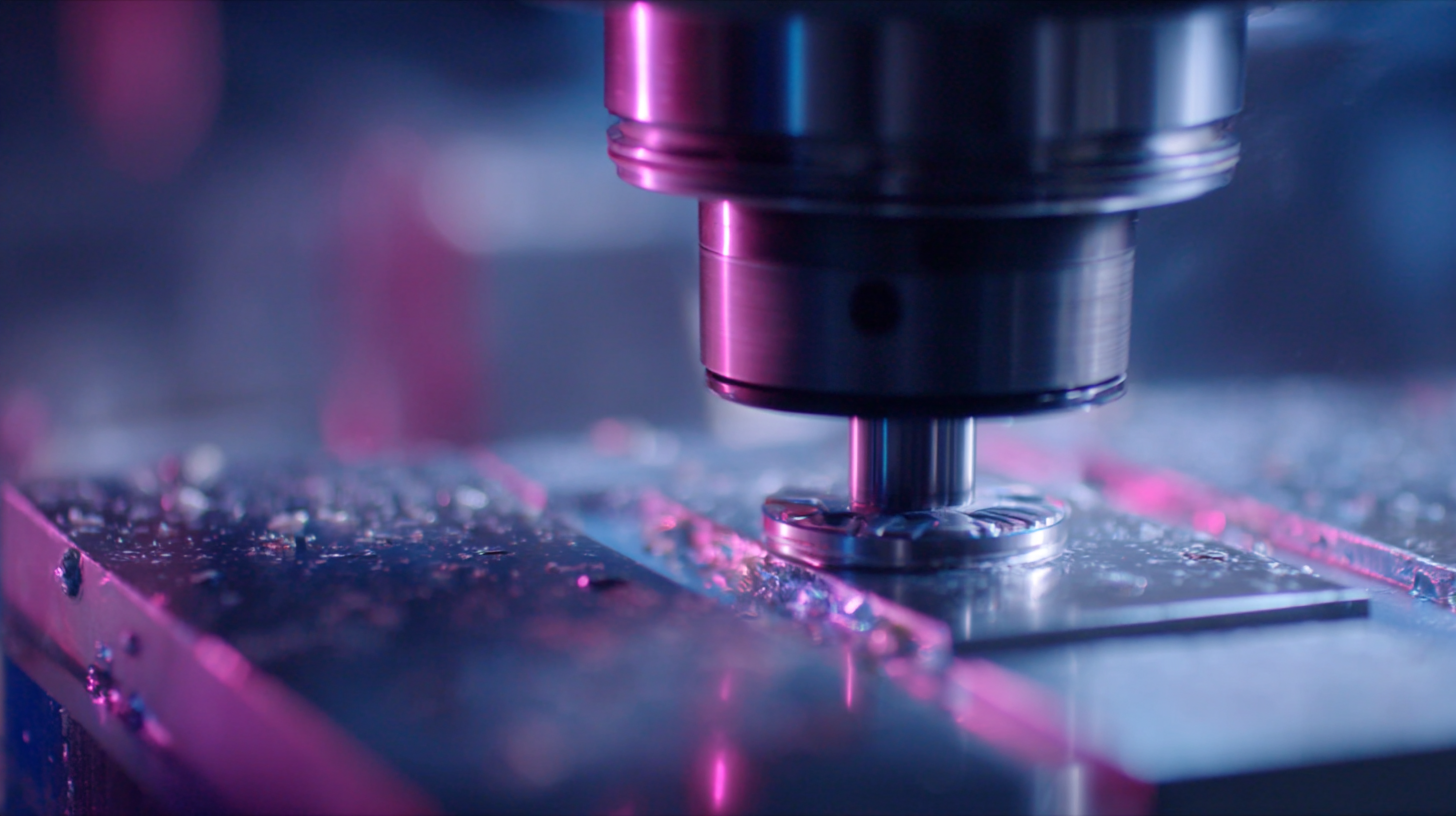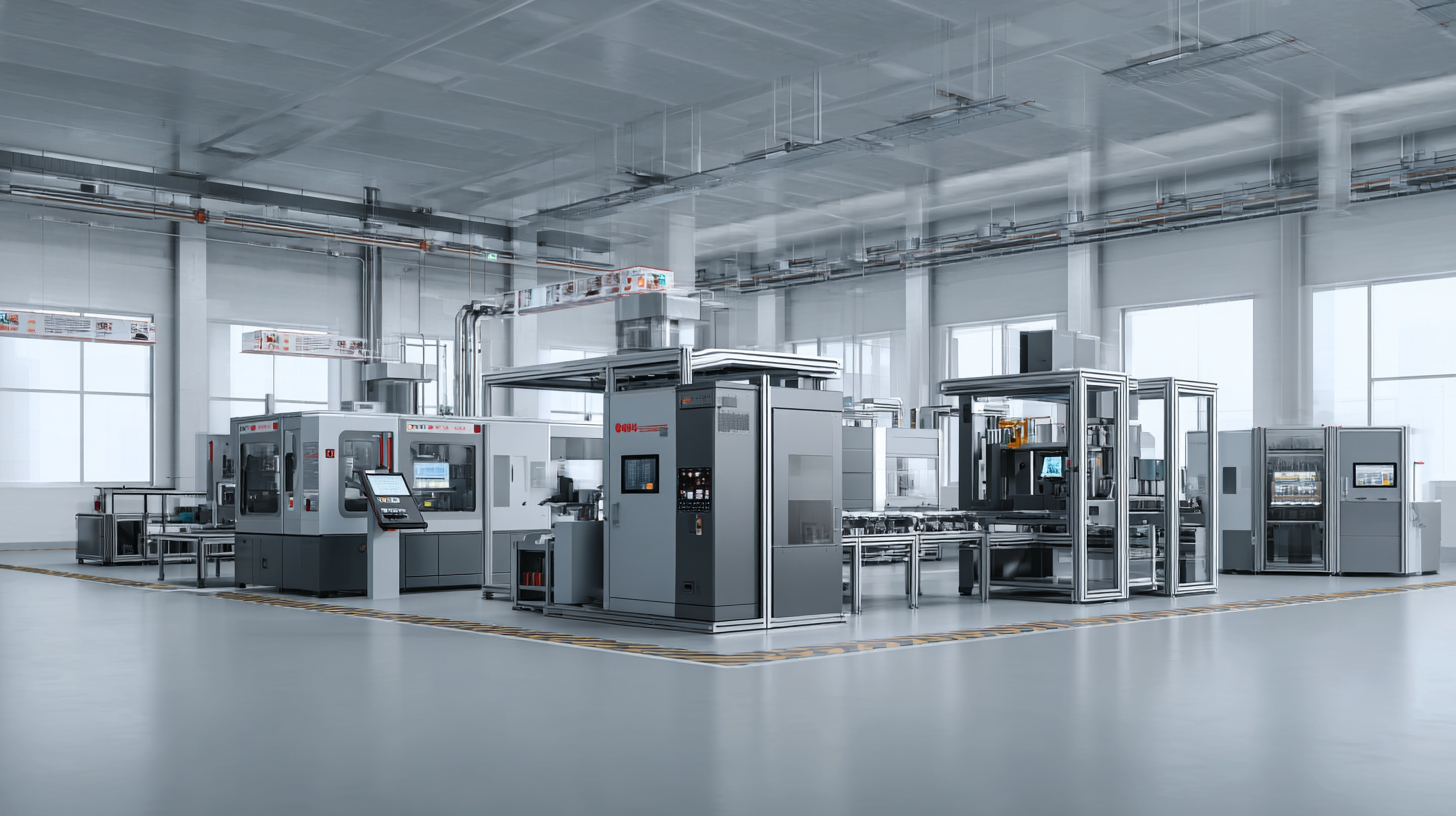As we look ahead to 2025, the landscape of punch manufacturing is poised for significant transformation, driven by innovative technologies and emerging industry trends. The ability to adapt to these changes is crucial for manufacturers seeking to maintain a competitive edge in a rapidly evolving market. This blog will delve into the key trends and innovations that are set to shape the future of punch manufacturing, from advancements in automation and materials science to the increasing importance of sustainability and digital integration.

By understanding these trends, companies can better position themselves to meet the demands of an ever-changing environment and enhance the efficiency and quality of their punch production. Join us on this exploration of the future, where we will uncover the pivotal developments that will define the punch manufacturing industry in 2025 and beyond.
The punch manufacturing industry is undergoing a significant transformation, primarily driven by advancements in automation. This shift is not just about replacing manual labor; it’s about enhancing efficiency, precision, and productivity.
 Automated systems can execute repetitive tasks with high accuracy, minimizing errors often associated with human intervention. As a result, manufacturers can achieve greater output levels while maintaining product quality.
Automated systems can execute repetitive tasks with high accuracy, minimizing errors often associated with human intervention. As a result, manufacturers can achieve greater output levels while maintaining product quality.
To maximize the advantages of automation in punch manufacturing, consider these tips: First, invest in training for your workforce. Understanding how to operate and troubleshoot automated equipment is crucial for maintaining productivity. Second, conduct regular maintenance on automated systems to ensure they operate smoothly and efficiently. Preventive maintenance can help reduce downtime and extend the lifespan of equipment. Finally, integrate smart technologies that allow for real-time monitoring of production processes, enabling quick adjustments and optimizing workflow.
Automation is not just a trend; it is a vital component shaping the future of punch manufacturing. By embracing these innovations, companies can stay ahead of the competition and meet the growing demands of the industry effectively.
As we delve into the future of punch manufacturing, emerging materials are playing a pivotal role in transforming production processes. Recent innovations highlight the potential of advanced materials that promise not only enhanced performance but also sustainability. For instance, one notable advancement is the creation of fibers from recycled plastic flakes, which exemplifies the shift towards more environmentally friendly manufacturing methods. These developments are likely to influence the way manufacturers approach both the design and functionality of punch tools.
In addition, the integration of technologies drawn from varied industries, such as the Food Industry 4.0, offers fascinating insights into how by-products and waste can be repurposed into valuable materials. Implementing such approaches can lead to significant cost savings and a reduction in environmental impact.
**Tips:**
1. Embrace material innovation by exploring how alternatives can enhance tool longevity and performance.
2. Stay updated on industry trends that highlight sustainable practices, as consumers increasingly favor environmentally responsible products.
3. Monitor cross-industry technologies to identify potential applications that could streamline manufacturing processes in punch production.
As the punch manufacturing industry evolves, sustainability is becoming a key pillar driving innovation. Recent reports indicate that over 60% of manufacturers are prioritizing eco-friendly practices by 2025, with green technologies projected to reduce carbon emissions by 30% across the industry. Innovations such as energy-efficient machinery and sustainable materials not only enhance production efficiency but also align with the increasing consumer demand for environmentally responsible products.
Moreover, advancements in recycling processes are transforming waste management in punch manufacturing. According to a study by the International Recycling Bureau, adopting closed-loop systems can significantly diminish waste, with up to 70% of scrap material being reused in production. This shift not only lowers the environmental footprint but also leads to substantial cost savings, making sustainability a win-win for manufacturers. The trend underscores a collective responsibility towards preserving our planet while ensuring that punch manufacturing continues to thrive in an increasingly competitive market.

The future of punch manufacturing is being dramatically transformed by the advent of digitalization and smart technology. These innovations are not only streamlining the design process but also enhancing the accuracy and efficiency of punch production. With advanced software simulations, manufacturers can now test and refine designs in a virtual environment, reducing waste and time spent on prototyping.
**Tip:** Embrace CAD software to facilitate intricate designs and simulations. This digital tool allows for rapid adjustments and collaborative efforts among teams, ensuring that the final product meets precise specifications.
Moreover, the integration of IoT (Internet of Things) into manufacturing processes enables real-time monitoring and analytics. Manufacturers can track the performance of punches throughout their lifecycle, leading to proactive maintenance and reduced downtime. This data-driven approach supports better decision-making and drives continuous improvement in product offerings.
**Tip:** Invest in sensors and data analytics platforms to gather insights from machines. This can lead to enhanced productivity and the identification of trends that inform future designs. By leveraging these technologies, punch manufacturers can remain competitive in a rapidly evolving industry.
| Trend/Innovation | Description | Impact on Punch Manufacturing | Expected Deployment Year |
|---|---|---|---|
| Digital Twin Technology | Creating virtual replicas of physical punches for simulation | Enhanced design testing and performance analysis | 2025 |
| AI-Powered Design Tools | Utilizing AI to optimize punch design and efficiency | Faster design iterations and cost reduction | 2025 |
| Smart Manufacturing Techniques | Integration of IoT devices for real-time monitoring | Improved operational efficiency and predictive maintenance | 2025 |
| Sustainable Materials Development | Research into eco-friendly materials for punch manufacture | Reduction in environmental footprint of services | 2025 |
| Enhanced Collaborative Robots (Cobots) | Use of advanced robotics to assist human workers | Increased productivity and reduced error rates | 2025 |
As the punch manufacturing industry evolves, adapting the workforce to meet new demands is crucial. According to a recent report by the Manufacturing Institute, 2.4 million jobs are expected to go unfilled in the manufacturing sector by 2028 due to skill shortages. This underscores the importance of equipping workers with the necessary skills to navigate advancements in automation and technological integration.
To remain competitive, companies should focus on upskilling their employees. Investing in training programs that emphasize critical thinking, digital literacy, and robotics can bridge the skill gap. Collaborations with educational institutions to create tailored programs that reflect industry demands can also foster a more skilled workforce.
Tip: Encourage a culture of continuous learning within the organization by offering resources such as online courses and workshops.
Moreover, fostering adaptability among staff is essential. As the industry leans towards smart manufacturing, employees who are comfortable in a technology-driven environment will lead the way in innovation. Emphasizing soft skills like communication and teamwork, alongside technical training, will prepare workers to tackle future challenges effectively.
Tip: Implement mentorship programs that pair experienced employees with newcomers to facilitate knowledge transfer and enhance hands-on learning experiences.
